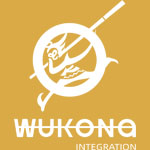
In the past three years, in response to more and more personalized consumer demands, product upgrading iterations have been accelerated.
International brands launch customized products for the Chinese market;
Traditional Chinese brands explore transformation to catch public's attention;
Up-and-coming emerging brands won the market segment with their massive commercial funds.
From cosmetics to clothing, food and beverage to liquor, new brands and new products coming out fast, and consumers options are now extremely rich. The rapid development of e-commerce platforms and content platforms not only enables products to be pushed to consumers faster, but also makes it easier for comparing and choosing between different brands and platforms.
According to the survey results of Accenture in 2021, 80% of the respondents "recently tried new brands", and 45% of the respondents "tried in the past year" the frequency of new brands has increased ", and 90% of the respondents have tried at least one new consumption channel (including live e-commerce, fresh e-commerce Community group purchase, etc.)

With the rapid improvement of the quality of domestic products, the innovation of marketing methods, and the high confidence of Chinese culture, there are cases of local brands catching up with and surpassing international brands in many categories.
This survey shows that international brands still dominate most categories, especially in the two categories of beauty and skin care and 3C digital. More than 60% of the respondents prefer international brands. The only category in which domestic brands are dominant is food and beverage.

In the post epidemic era, consuming behaviors returns to rational, no longer chasing “Famous Brands”, but paying more attention to the specific functions and utility.
The competition among brands has gradually shifted from "soft power" such as design and marketing to "hard power" such as R & D and supply chain. There is still a long way to go for the new domestic brands that use new marketing channels to win and quickly rise through single best seller to compete. Even for famous brands with deep brand accumulation and strong R & D and supply chain strength, they are not guaranteed with an effortless win. In this extremely diversified and rapidly changing Chinese market, Chinese consumers are proficient and willing to study commodity characteristics.
Therefore, in addition to making good products and meeting people's real needs, they also need to pass on high-quality content through the information channels concerned by the target consumers. As this is vital to leave a deeper brand mark in each "research" and "comparison", So as to accumulate brand awareness and ultimately achieve sales growth.
Consumers nowadays are better at restraining impulse and reducing unnecessary expenditure, usually will do in-depth and thorough research on what they want to buy.
The report shows that among the 10140 people interviewed, 60% of the respondents will compare the prices of the goods on various channels before placing an order. After confirming the purchase demand, most consumers will find the information of goods or services through 2-4 channels. Comparing the data of 2017 and 2021, we can find that the four channels with the most obvious growth are e-commerce websites, shopping malls / store experiences, social sharing platforms, and live rooms / video sharing websites, which reflect the great changes experienced by China's consumer market in the past four years.
This outcome is exactly what WKI has always been advocated over the years. New channels shall not be overlooked especially for new comers. When the traditional retail channels are saturated and shrunk, making a debut in the new channels is much more sensible.
Chinese consumers have a strong desire to try new things and are generally open and positive about digital technology. Nearly 90% of consumers use mobile phones for more than 3 hours a day. The younger the group, the longer the mobile phone use. Mobile phones, which bear many functions such as payment, travel, social networking and office, have almost become the extension of ones’ body.

In the face of rapid social changes and a large number of choices, Chinese consumers have become more mature, more rational and independent, and have a comprehensive view of the functional value, emotional value and long-term return of goods and services.
It is believed that
In China, a mature consumer society has emerged.
It is clear that foreign as a label no longer guarantee high-end or high quality. New comers to the market whether domestic or overseas will have to compete at the same level, which means building up the brand from scratches, with persuading stories and hard-core products and service. Effortless wining just by original identity is history. Intense content communication is the way to go.
Source: Accenture 2022 Chinese Consumer Insights









